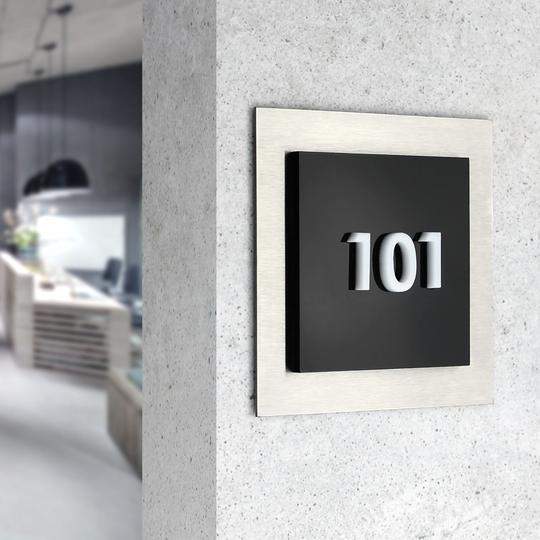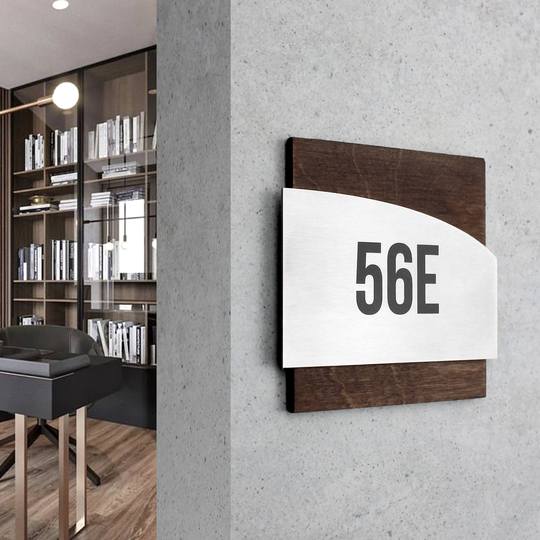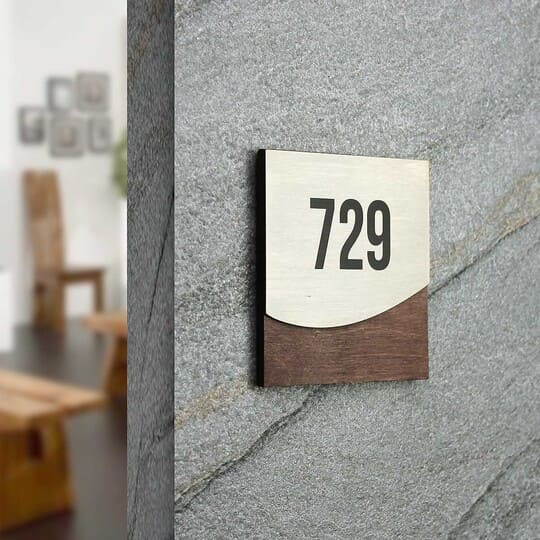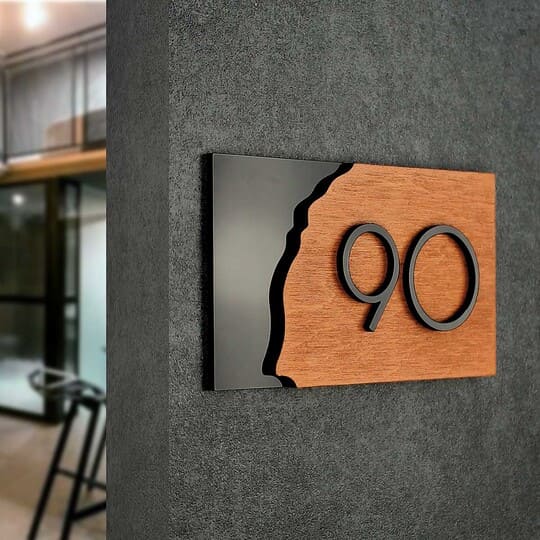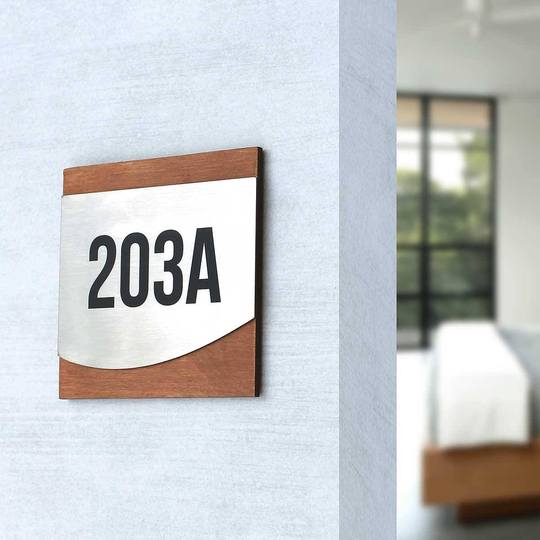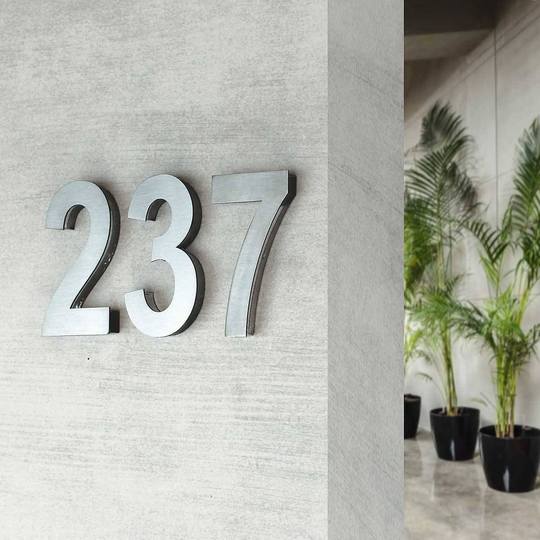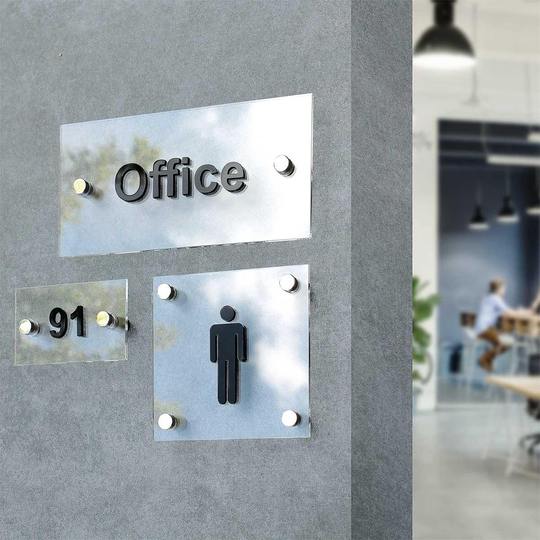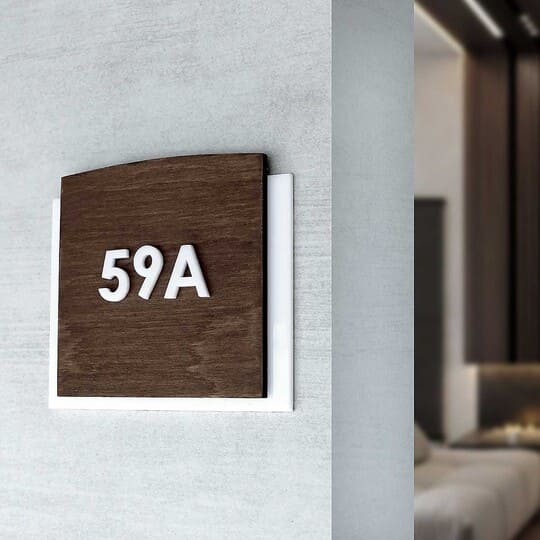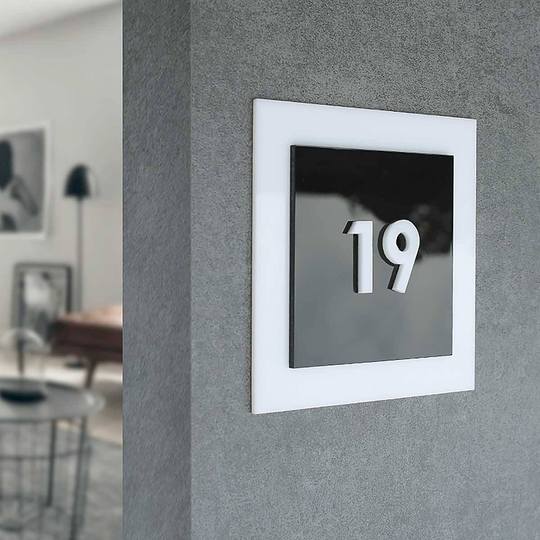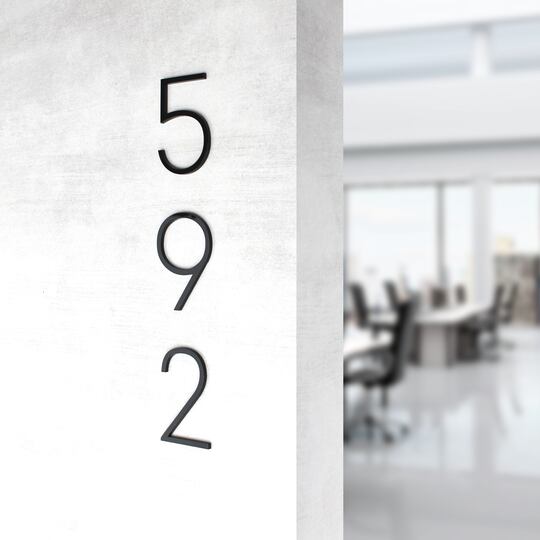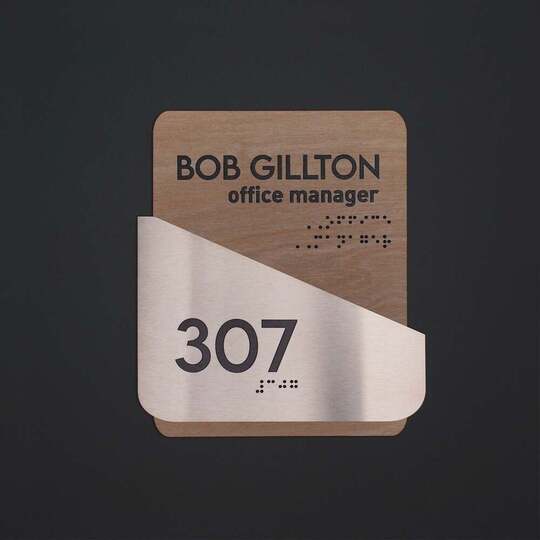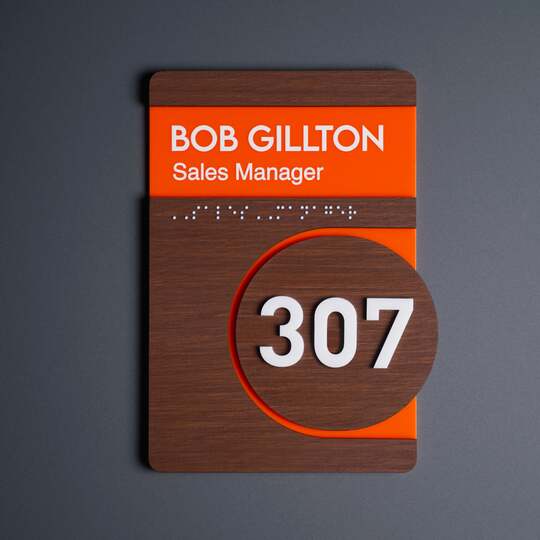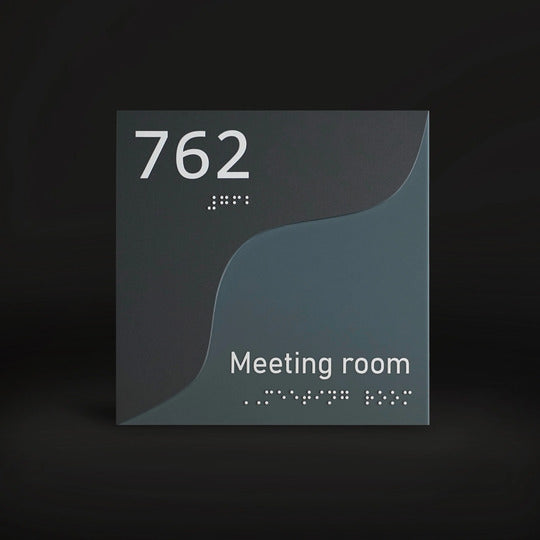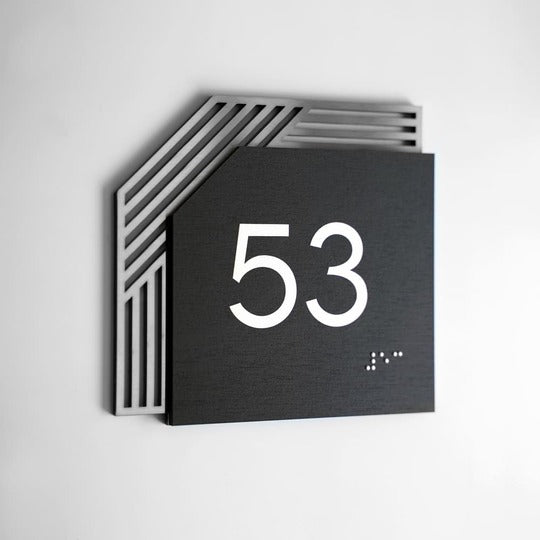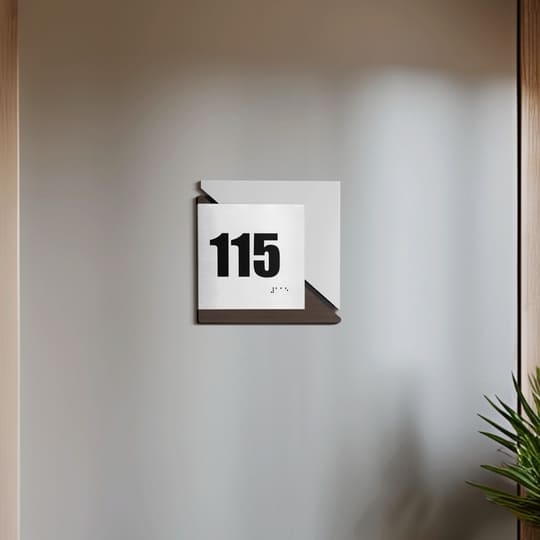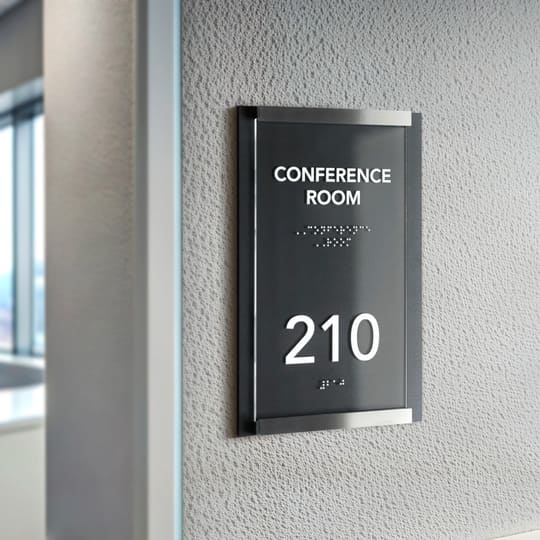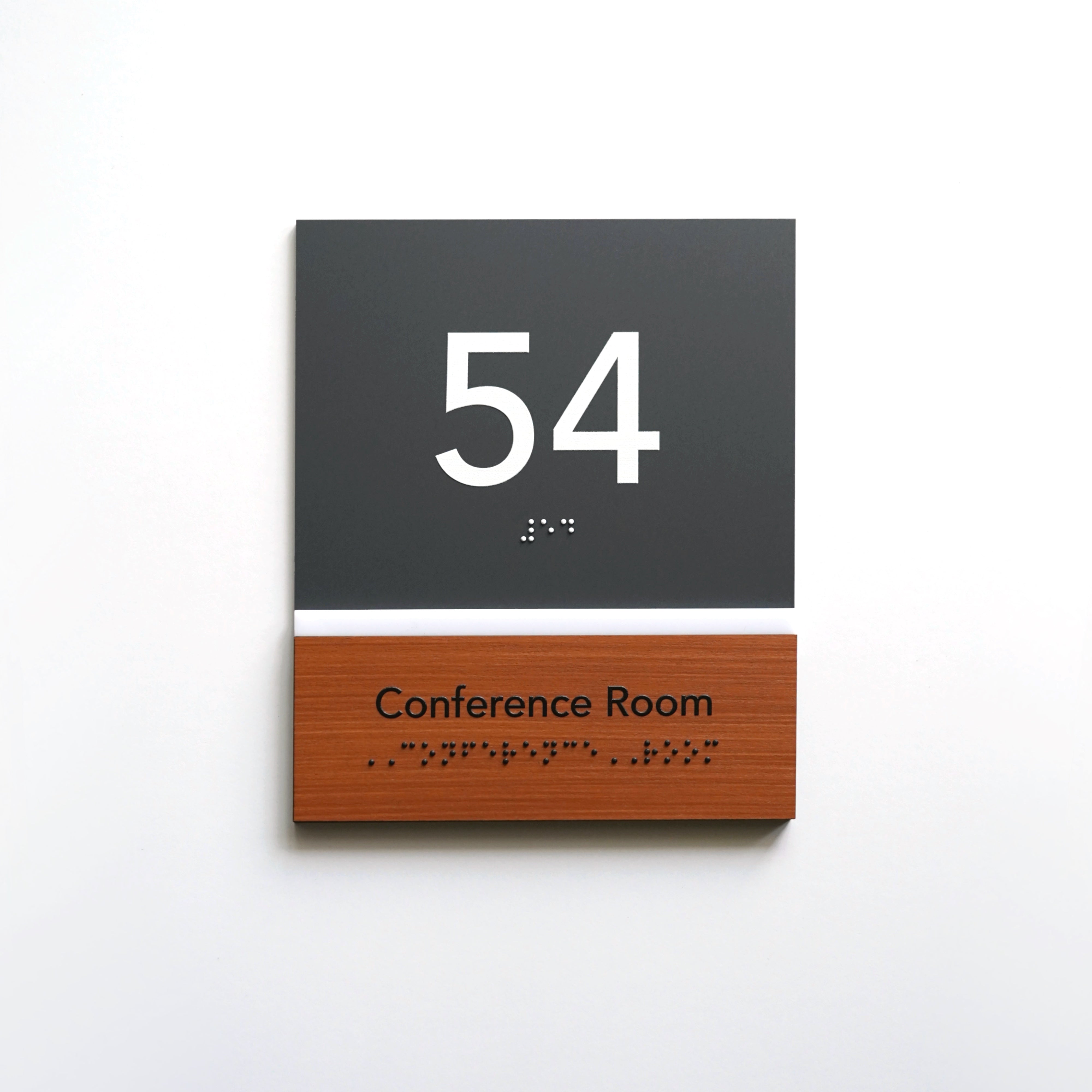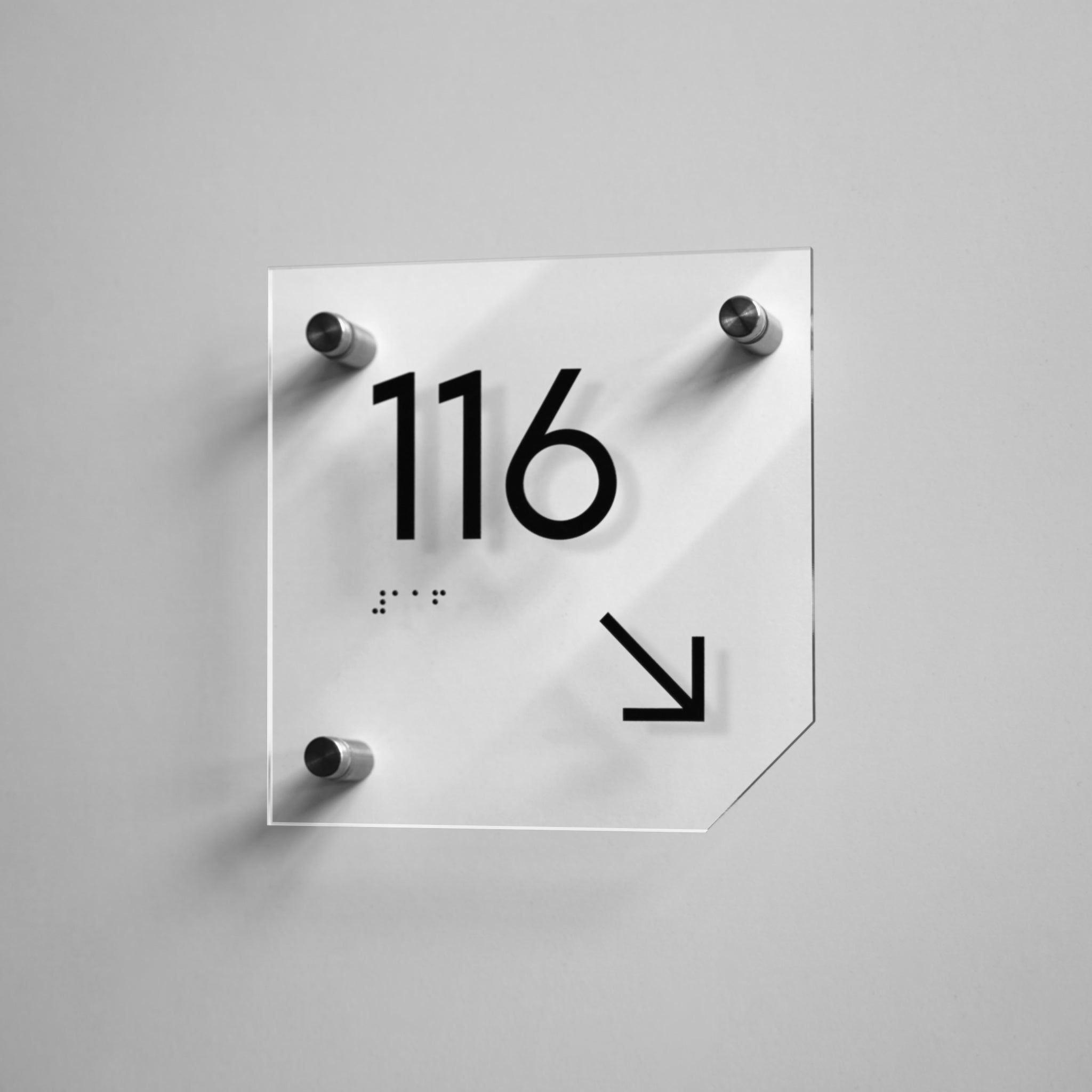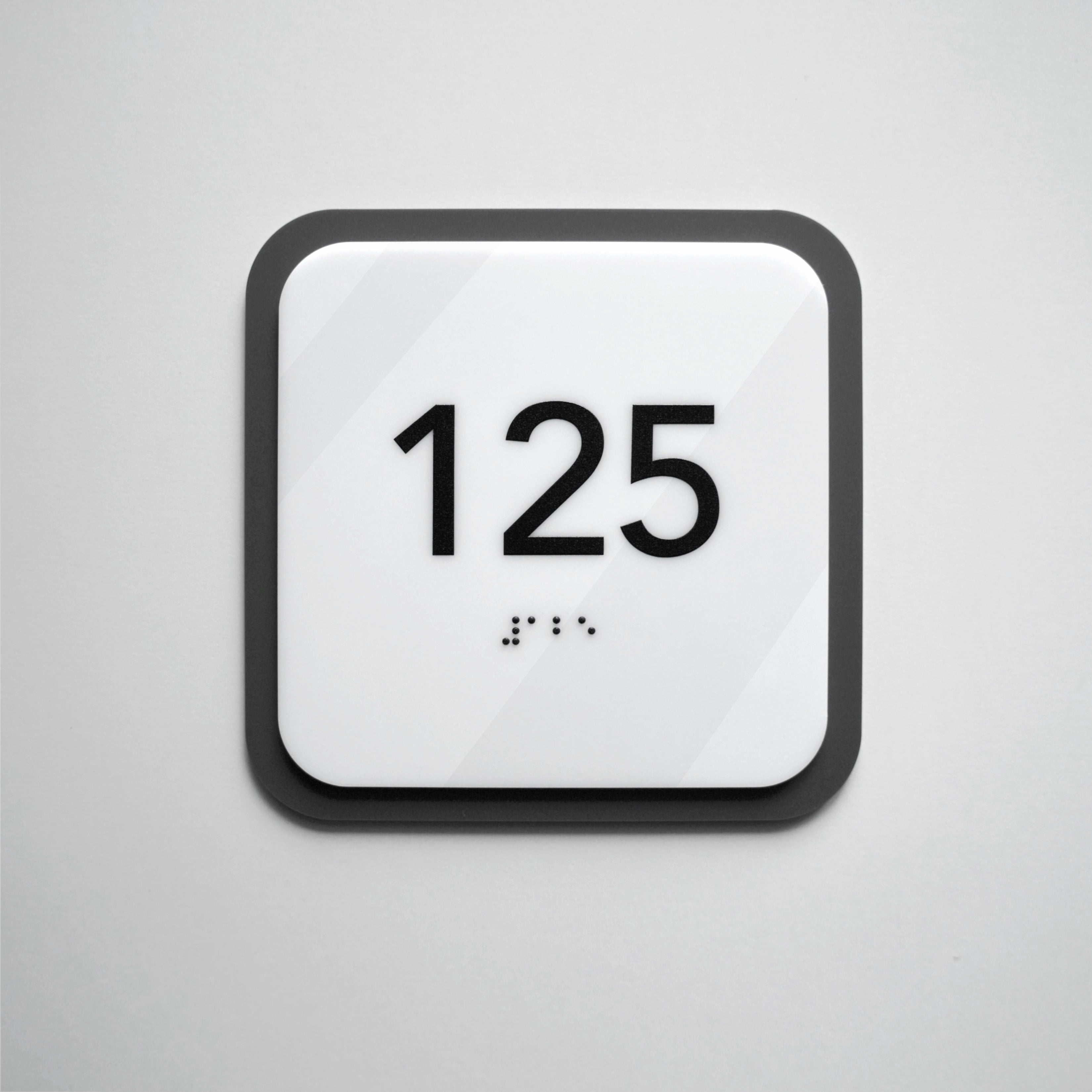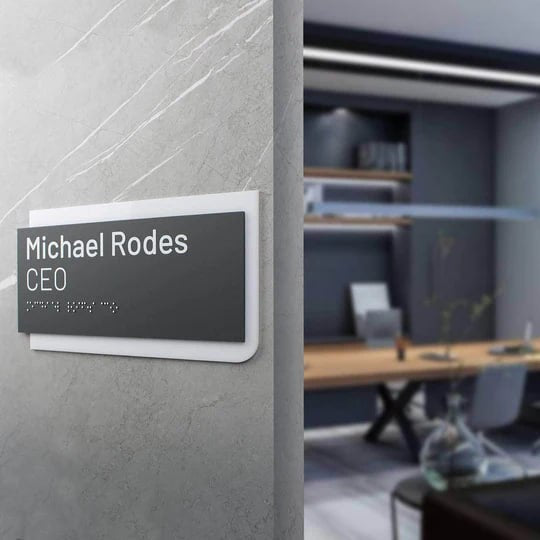
Architectural Dialogue: How Modern Interior Signage Interact with Space
Architectural design and signs: importance for business
Architectural signage plays a crucial role in shaping the perception of a new space, blending functionality with aesthetics. Architectural design is not just about colors, shapes, and furniture — it extends to the finer details, like directional signs and informational signage, which create structure and enhance navigation.
New buildings especially need a harmonious combination of architectural elements, where signs play an important role in forming a holistic design. They not only help with navigation, but also emphasize modern trends, giving the space a finished look.
Modern business signs can transform how a space is perceived, create accents and reinforce a particular style. These signs seamlessly integrate into the overall concept, fostering an architectural dialogue between the space and its visitors.
What are the best high-quality materials for complementing modern interiors? How do color choices and lighting influence signage perception, taking into account the psychology of color? What factors should be considered while sign placement, especially with wayfinding signage? Let's explore these key aspects.
High-quality materials: making the right choice
Choosing materials is key—it determines how well signage blends into a facility’s environment and contributes to a space’s overall aesthetic.
- Wooden signs — warm and tactile. They perfectly complement the architectural elements in eco-friendly concepts, loft interiors and Scandinavian style spaces. These interior signs are perfect for hotels, restaurants, and coworking spaces, leaving a lasting impression.
- Stainless steel signs — a hallmark of status and exclusivity. They are chosen for business centers, upscale hotels and premium apartments. Premium metal signs blend perfectly with glass, concrete and dark wood, ensuring both durability and clear navigation for visitors.
- Acrylic signs — a perfect solution for modern architecture. Transparent or colored acrylic integrates well into minimalist interiors, offices, high-tech spaces, and art installations.
Considering the meaning, context, and style of the space is crucial. For instance, minimalist signs fit naturally into modern spaces, while poorly chosen materials can disrupt the harmony of the overall design.
Sign colors: how they impact the space
Colors are as vital as materials when it comes to signs — they can either enhance a concept of the interior or create visual clutter that disrupts the overall design. Thoughtfully selected sign colors help maintain a cohesive aesthetic, reinforcing the brand identity and the atmosphere of a space.
For minimalist interiors, restrained shades such as white, gray, graphite, and black are most suitable, as they complement the design and maintain a unified composition. These neutral colors create a clean, modern look, ensuring that the signage integrates seamlessly without overpowering other design elements.
Spaces that emphasize natural elements benefit from warm, earthy tones, which enhance the organic feel of the environment. Wooden, beige, and sandy shades harmoniously fit into such interiors, creating a feeling of comfort and natural balance. These tones work especially well in spaces designed with biophilic principles, where nature-inspired elements play a key role in shaping the atmosphere.
When an accent is required, vibrant colors become a powerful tool. They add dynamics, attract attention and can become part of the brand's corporate identity.
In addition to color and messaging, the texture of the signs plays a significant role as well. Glossy surfaces reflect light, adding depth, while matte surfaces soften the visual impact, creating a more subdued and elegant atmosphere.
Texture effect also plays a significant role. Glossy surfaces reflect light, enhancing depth, whereas matte surfaces create an effect of softness and calmness.

Architectural signature in action: real-life cases
Modern signs for residential complexes and businesses are not just a detail, but an essential element of the space that affects its style and convenience.
Hotels frequently feature entrance signs to establish a recognizable environment, underscore their prestige, and organize navigation. Stainless steel is often the material of choice, highlighting the premium nature of the space while integrating seamlessly with minimalist design. For instance, the Genova collection perfectly complements contemporary hotel spaces, emphasizing their elegance.

In business centers, signs serve both an aesthetic and a functional purpose. They help to provide enhanced navigation and increase the visibility of areas inside the building. Acrylic signs with clean geometric shapes are commonly used as they fit well within modern architectural styles. The Jure collection is a prime choice for such spaces, as it emphasizes modern architecture and forms a clear and cohesive signage system.

Residential complexes prioritize not only style but also creating a cozy atmosphere. Expressive signs, such wooden ones with a tactile font for a warm and homely atmosphere are popular here, enhancing the spatial structure. The Buro collection perfectly complements the living areas, adding individuality and aesthetic refinement.

Custom signs design: points to consider
To create the perfect solution, it is important to take into account the style of the signs, because their design should correspond to the space's overall character. Wooden signs add coziness and naturalness to the overall aesthetic of interior, acrylics perfectly fit high-tech and modern premises, and metal ones emphasize status and prestige.
No less important is the contrast — informational signs should be highly noticeable, but at the same time harmoniously integrated into the overall style. Placement also plays a pivotal role, as signs should be positioned at optimal heights to ensure accessibility and convenience for visitors.
In addition, it is important to ensure a cohesive style, since the combination of different fonts, colors and materials can create chaos in the perception of space. The process of designing signs should take into account not only aesthetics, but also their adaptation to the architecture of the space, ensuring the signs naturally fit into the interior without appearing as out-of-place elements.
The concept of signage goes simple marking — it’s about forming a harmonious visual environment, creating atmosphere, and complementing architectural intent. It is also important to choose durable materials that are resistant to weather conditions, guaranteeing long-term use without loss of aesthetics and functionality.
Building signage solutions for decoration: style, navigation and brand identity
Architects should take into account the integration of the signs into the overall concept of the project, as this contributes to the harmony of the design and enhances the user experience. Thoughtfully placed architectural signage not only improves navigation but also reinforces the brand identity of a space.
For example, hotel wayfinding signage helps visitors quickly find the right areas, ensuring comfort, ease of movement, and a positive first impression. Similarly, in commercial buildings, clear and well-designed informational signage streamlines navigation, reducing confusion and enhancing customer satisfaction.
When signage systems are incorporated from the early stages of architectural design, they blend seamlessly into the space, becoming an organic part of the interior rather than an afterthought. This ensures that the entrance signs, directional signage, and informational displays complement the overall visual identity while maintaining high functionality.
It is important to apply premium materials, such as stainless steel, wood, and acrylic, which offer durability and an aesthetically pleasing finish. Following visual consistency is also essential, as it strengthens brand identity and recognition, making a business stand out in a competitive market. A well-executed signage system helps create a cohesive environment, where every element—from wall graphics to custom wayfinding solutions—contributes to the space’s professional image.
Entrance signs play a key role in defining a new space, simplifying navigation for visitors, and setting the tone for their experience. Beyond functionality, considering sign industry trends is essential for creating stylish and practical signage solutions that align with modern business needs. By incorporating high-quality materials and expert craftsmanship, businesses ensure that their architectural signage remains timeless, effective, and visually striking.
Conclusion: the importance of signature for business
Modern signs are more than navigation, they are the art of shaping space. They influence visitors, reinforce brand identity, make the space more functional, promote a better understanding of the space, and improve the customer experience.
With the right choice of materials, color and placement, interior signs can become a powerful accent that completes the aesthetics of the space.
Experienced architects and designers use elegant signatures not merely as functional tools, but as integral components of practical interior design.
Our company specializes in crafting stylish and durable signage solutions. Sign up for a consultation with our experts to choose elegant signs that will fit perfectly into your project!
